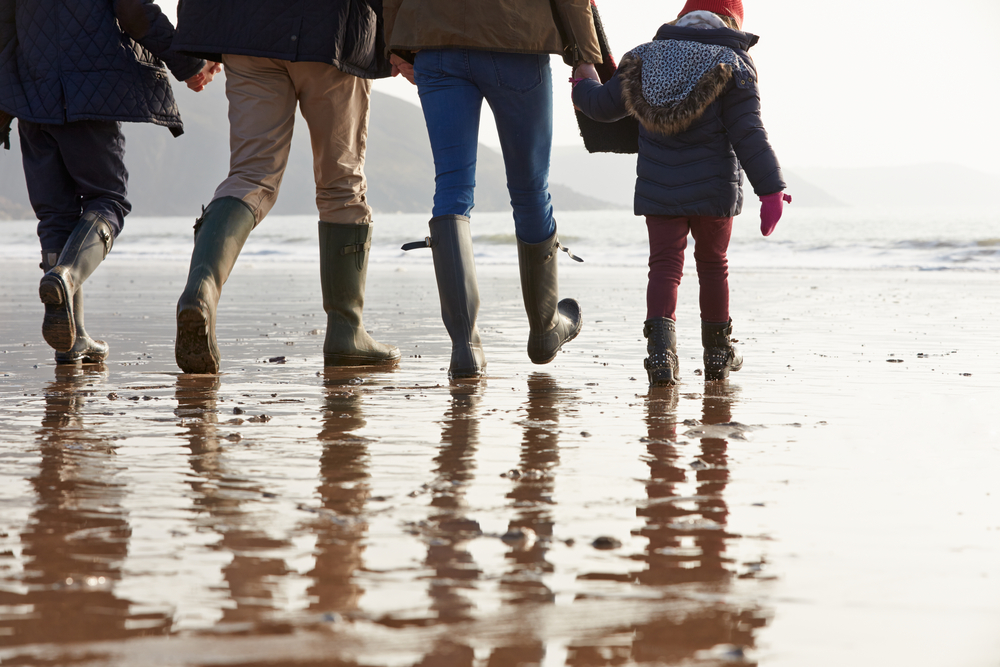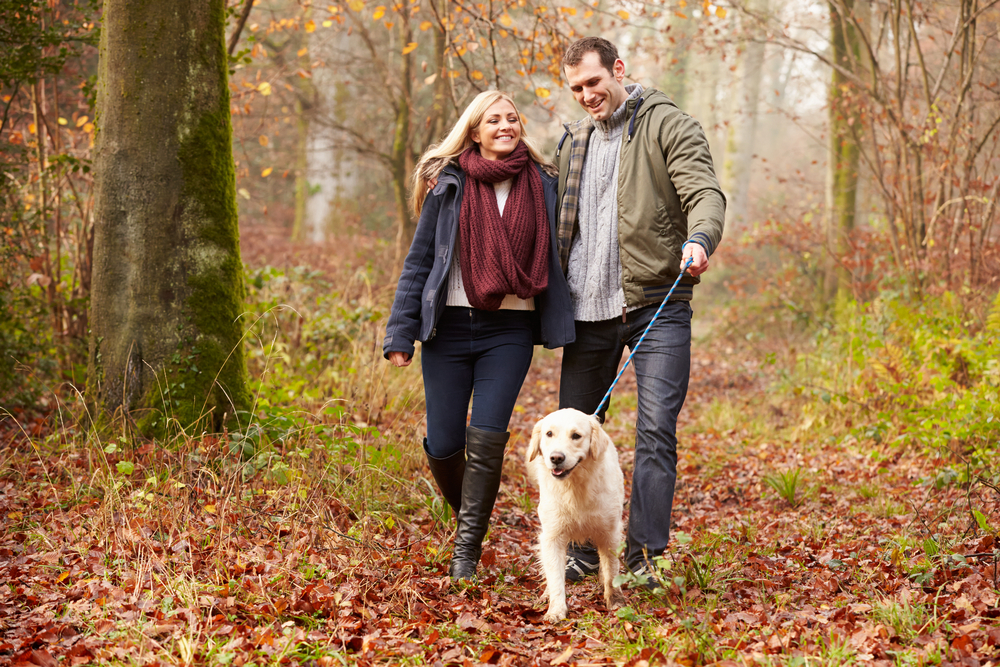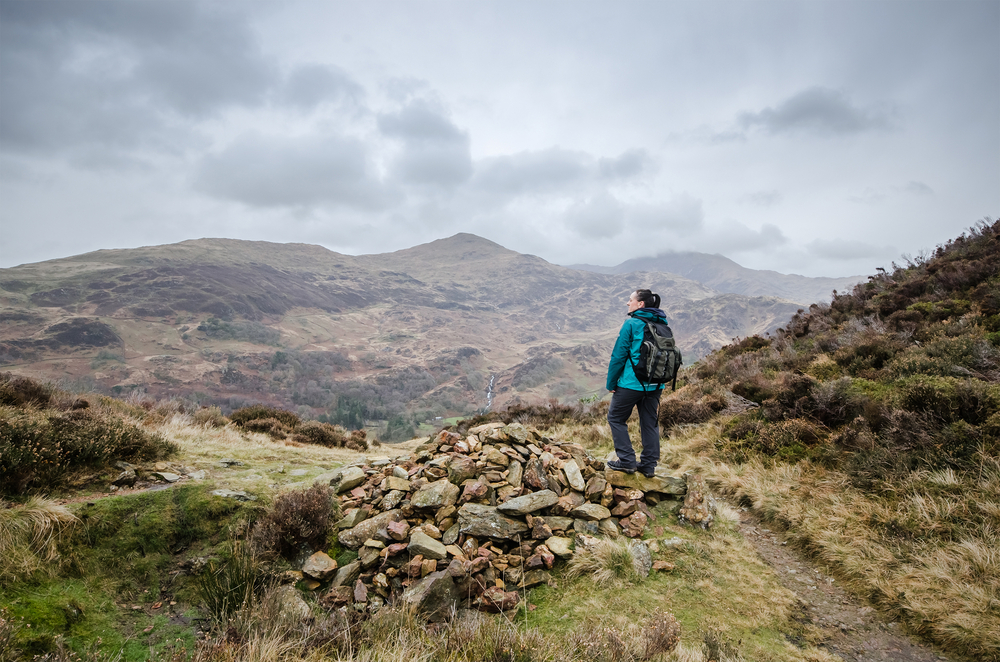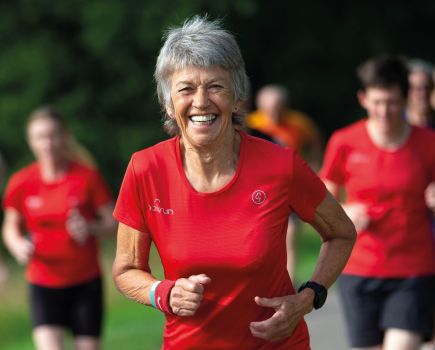We all know the health benefits of walking – improved cardio fitness, stronger bones and a clearer mind to name but a few, but did you know that walking in winter can give you an added boost physically and mentally? ‘The colder temperatures mean you’ll burn more calories as your body works to regulate its core temperature,’ says Dr Andrew Murray, sports and exercise researcher, GP and Merrell UK ambassador. ‘Your heart also has to work harder to pump blood around your body to your extremities and as your body works harder to keep you warm, you’ll receive an even greater influx of endorphins to boost your mood.’
What’s more, there’s something truly enchanting about winter. With its spectacular stripped-back landscapes, gnarly trees and frosty hilltops, there’s so much beauty waiting to be admired! So leave the sofa behind for an hour and follow our tips for getting the most from your chilly winter strolls…

Winter walking terrain
‘While winter landscapes make for breathtaking views, the terrain can be a little trickier to navigate,’ says Andrew. ‘From slippery mud to frozen – and equally slippery – divets, it’s important to be mindful of your steps when walking on winter ground. One of the best ways to stay on your feet is to “keep” a low centre of gravity over difficult terrain. This means keeping your weight evenly dispersed across both legs. When walking across a particularly tricky patch, bend at your knees slightly to lower your body in a sort of crouched position – a bit like the stance a surfer would adopt. While you don’t want to do this along the whole walk, it’s a good technique for getting over rougher ground as you “crab walk” your way across it (plus it’s a fantastic thigh workout!).
‘If you know the terrain is really rough, consider taking some walking poles – this can give you an extra point of contact with the ground. Good quality “grippy” footwear is also essential here.’
Plan for the weather
‘Layering is a sensible idea in winter so dress appropriately,’ says Andrew. ‘Consider a light thermal layer against your skin for warmth, along with a waterproof jacket. Mid-high top walking boots will support your ankles on uneven terrain as well as offering good tread and traction on slippery paths. And don’t forget gloves and a hat.
‘Remember to pack a flask of something warm to drink and keep your fluid intake up.’
Finally, it sounds obvious, but make sure you check out the weather forecast in advance and when planning your route ensure there’s at least one dry place to stop en-route if you need to.
- How to adjust your walking style to burn more calories
Building up your walking fitness
‘Having a good base level of fitness will allow you to explore varied terrain and stay out for longer during your walks, so it’s a good idea to think of additional activities to help you build your stamina,’ says fitness coach and ‘Never Stop London’ community manager, Emily Ackner (@neverstoplondon). ‘Focus on building up glute strength (the muscles in your bottom). Strong glutes will mean more stability through your hips and, as a result, better alignment of your knees and ankles as you walk. This is helpful when navigating more challenging terrain and weather conditions during winter walks.’ There are some simple exercises you can try at home to improve your walking…
Walking lunges
These build muscular endurance and strength in your legs, and test and improve your balance too. Step forward with your right leg into a lunge where both knees are at 90 degrees, be mindful not to let your leading knee fall over your toe, step up and together, and change legs.
Step-ups
Emulate moving on steeper ground with a simple step-up exercise. Using a bench or step, simply step up onto the step and down again (think knee-height elevation). Ensure you engage core and glutes as you do so and squeeze your bottom at the top of the step up to get maximum value from the exercise. Lead with your right leg first, then swap legs.
Lateral leaps
These are a great way to challenge your balance and ankle strength to prevent injury from rolling or slipping over any uneven surfaces. Simply hop / leap from one foot to the other, balancing on the foot you land on for a few seconds, before hopping across to the other.
Stretching out
‘Dynamic stretching ahead of a walk is important, especially if you’re going to be covering a large distance or wearing a heavy backpack,’ says physiotherapist Alex Clark MCSP (neo-g.co.uk). Warming up is more important in colder weather as it helps to warm your muscles in readiness for exercise. This will help reduce the risk of injury, and increase flexibility in your joints and muscles, meaning you’ll be able to walk more easily and more efficiently. Follow Alex’s warm-up tips below for easier walking…
For a short walk…leg swings and arm circles
These are perfect for a quick pre-walk exercise. Leg swings help to warm up and stretch the muscles around your hip joint, preventing injuries and reducing pain in that area.
‘To do this exercise, stand on one leg and swing the other loosely from your hip, front to back. Make sure to use a relaxed motion and ensure your foot doesn’t go too high. Do 15-20 swings on each side.
‘Your whole body is getting a workout when you’re walking, so arm circles warm up and help stretch out your shoulders, arms, chest and upper back. Hold both arms straight out to your sides. Make 10-12 slow backward circles with your hands, starting small and finishing with large circles, using your entire arm. Shake your arms out and repeat with 10-12 forward circles.’

Working the hills
‘Hill work engages different muscles in your legs, including your quadriceps at the front of your thighs. It also burns more calories and increases the intensity of your workout,’ says Emily. There are a few tips to try when tackling hills. ‘Firstly, shorten your steps when walking uphill, as this will make it easier to lift your body up the incline. As your steps are shorter, you won’t be covering as much ground so try to increase or at least maintain your speed. Finally, lean slightly into the hill. Only slightly though, too much and you’ll lose your balance and keep your torso over your hips.’
If you’re carrying a load…shoulder rotations
Any type of walking will use the muscles in your back and arms, as you will often find you swing your arms more on a tough walk in order to propel your body further. Add a backpack into the mix and you’ll find there’s extra strain, meaning a warm-up for this area is vital. Arm swings will help with this but add in some shoulder rotations to give yourself a boost. Standing tall, rotate the shoulders in a big, smooth, circular motion. Bring the shoulders back, then up toward the ears, and then forward and down as low as possible. Repeat 10 times, and then go in the opposite direction.’
If it’s a long way…lunges
‘They’re a vital exercise for runners, but lunges are also great if you’re going to be walking long distances or covering a lot of hills. They help improve your balance and stretch out your hip flexors, helping increase strength and so hopefully lessening the chance of injury.
‘Step forward with a long stride and drop your back leg toward the ground but without touching it. Focus on keeping your front knee over your ankle. Do 10 lunges and then repeat on the other leg.’
- The best walking holidays
- We review the most comfy shoes and trainers for women








